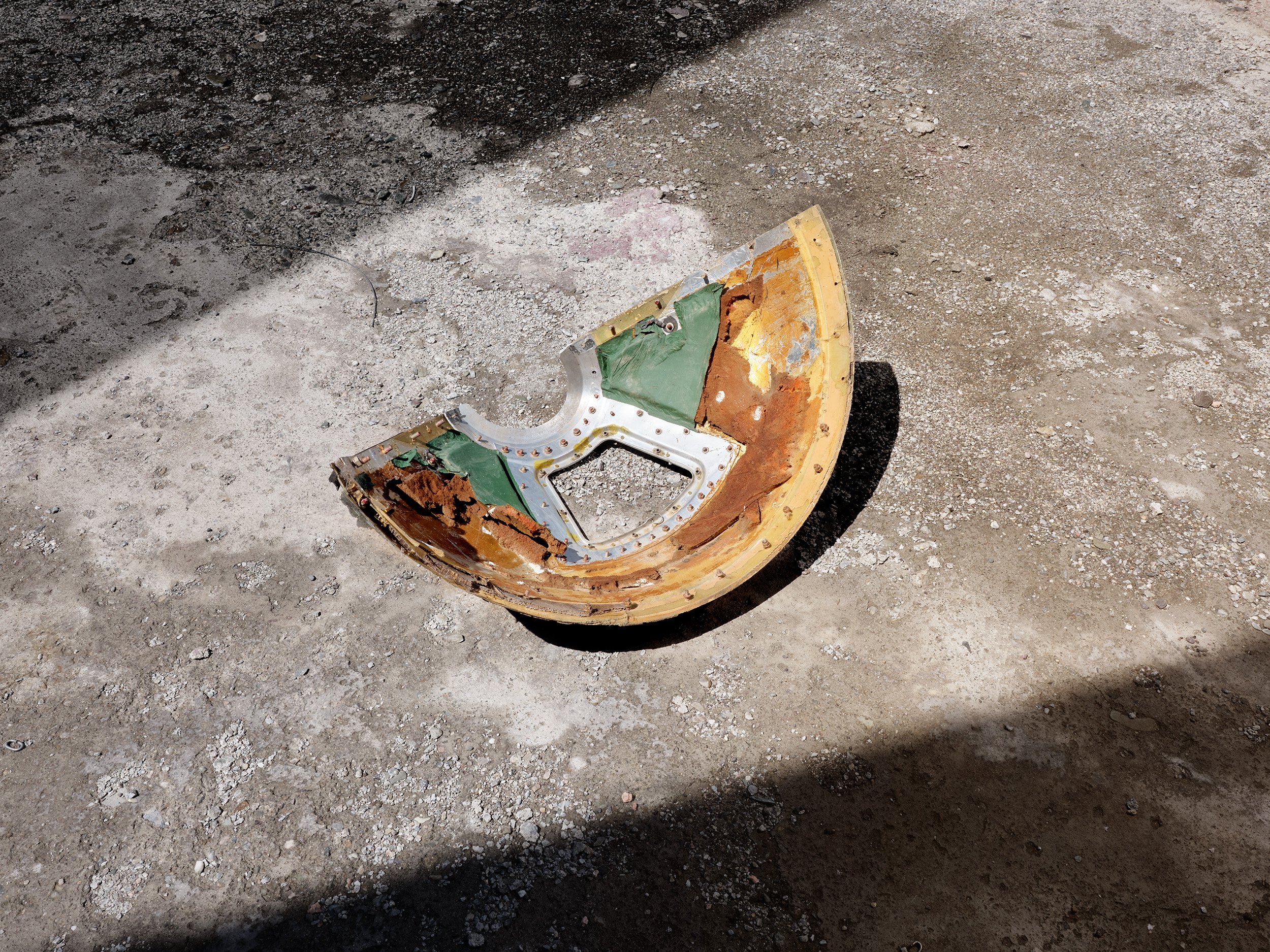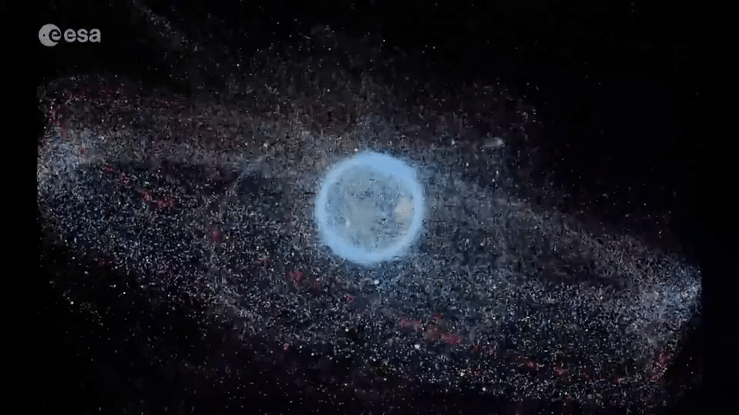METAL SKY

METAL SKY (2022) This photography project showcases fragments of space debris that has plummeted back to Earth. The increasingly critical issue of space junk poses a growing danger. The images are made in the impact zones surrounding the infamous Baikonur Cosmodrome in Central Asia, where discarded rocket boosters and other materials accumulate following their launches into orbit. The people living in these areas try to make the best of it. Although very dangerous, it sometimes also offers means to sustain their households by salvaging debris.
Space junk, is not only a growing problem on the planet Earth, but it is also one belonging to the field of space exploration itself. The amount of debris in Earth's orbit poses a significant threat to both active and future space missions. One of the main sources of all this material is the accumulation of discarded rocket stages and defunct satellites. As more and more countries and private companies launch their own satellites, the amount of debris in orbit continues to increase. This waste can range in size from small fragments to entire defunct satellites and can travel at extremely high speeds, making collisions with operational spacecraft a real danger
Unknown rocket fragment found in the region of Karaganda, Kazakhstan, 2022
Large fragment of presumably Proton rocket payload cover found in region of Zhezqazghan, Kazakhstan, 2022
Son of farmer Talgat standing next to rocket nose cone found on property, Shalghiya, Kazakhstan, 2022
Soviet Cosmonaut sign at the side of the road entering the region of Zhezqazghan, Kazakhstan, 2022
Farmer on his motorbike next to nose cone on property, Zhezkazgan region, 2022
The Monument To The Conquerors Of Space, Zhezkazgan, Kazakhstan, 2022
Part of R7 booster from the early 60's, Zhezqazghan, Kazakhstan 2022
Part of R7 booster from the early 1960’s, Zhezqazghan, Kazakhstan, 2022
Part of R7 booster from the early 1960’s, Zhezqazghan, Kazakhstan, 2022
Unknown rocket fragment found in the region of Karaganda, Kazakhstan, 2022
Burned cable connector found next to large Proton rocket fragment, region of Zhezqazghan, Kazakhstan, 2022
Unknown rocket fragment found in the region of Karaganda, Kazakhstan, 2022
Boys riding motorbike in abandoned village of Dzjezdy, Kazakhstan, 2022
Soviet space monument entering a region of Zhezqazghan, Kazakhstan, 2022
Ms. Tolqyn, local museum guide standing next to hatch of unknown rocket, Zhezkazgan, Kazakhstan 2022
Model of the current cloud of debris circling the earth, made by ESA.
The growing presence of space debris poses a significant threat to spacecraft, astronauts, and the natural environment. Models are used to track the size and the behavior of debris that range from tiny particles of 0.001mm to large objects of 100m in order to understand the risks involved. The information generated by these models is essential in informing important decisions and ensuring the safe and responsible use of outer space. The increasing amount of space debris highlights the urgent need for prompt attention and action to prevent harm towards our planet and its surroundings. Neglecting this issue could lead to severe and long-lasting consequences The impact of space debris extends beyond the realm of space exploration and usage, affecting our daily lives through disruptions in satellite communications and other critical technologies.















